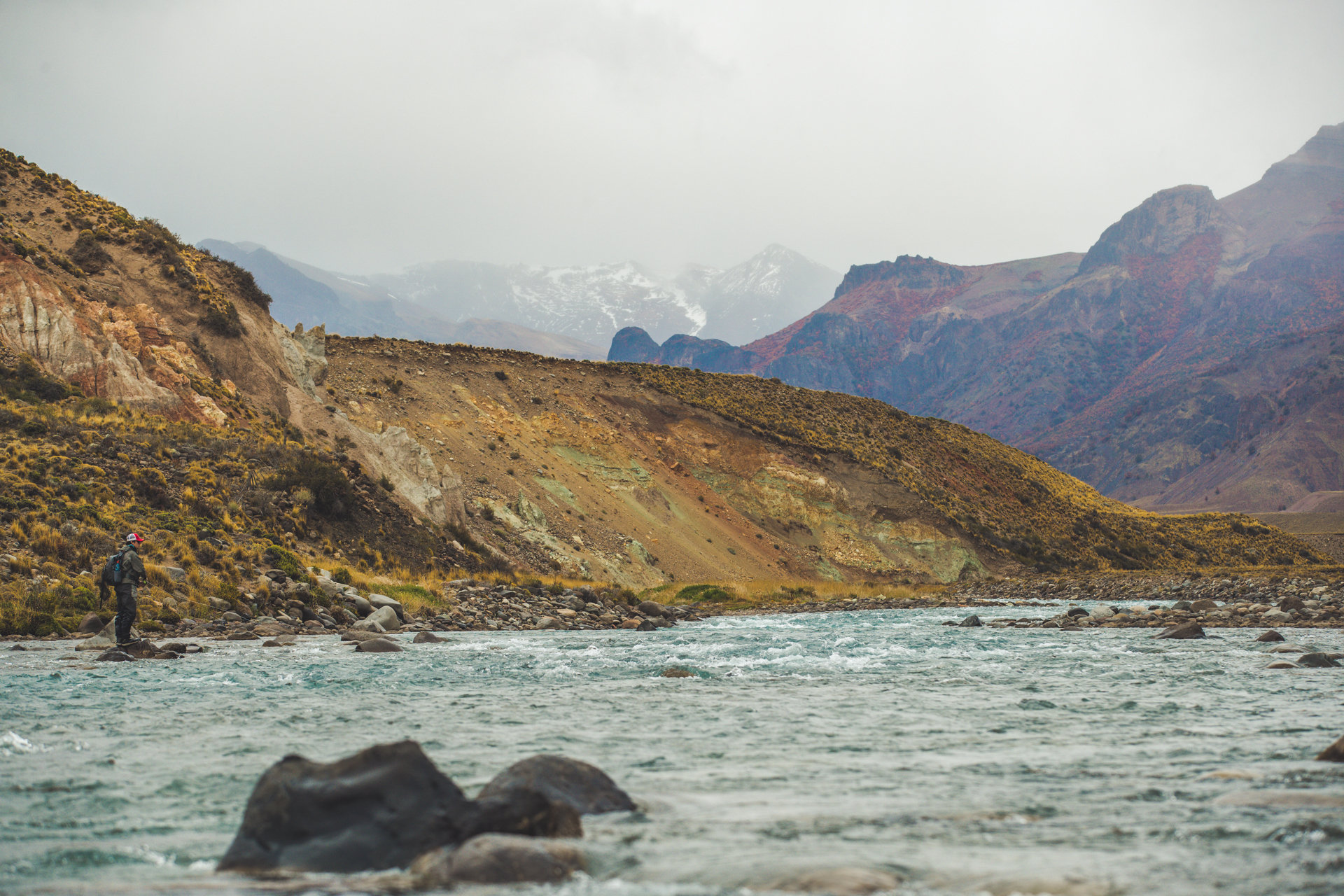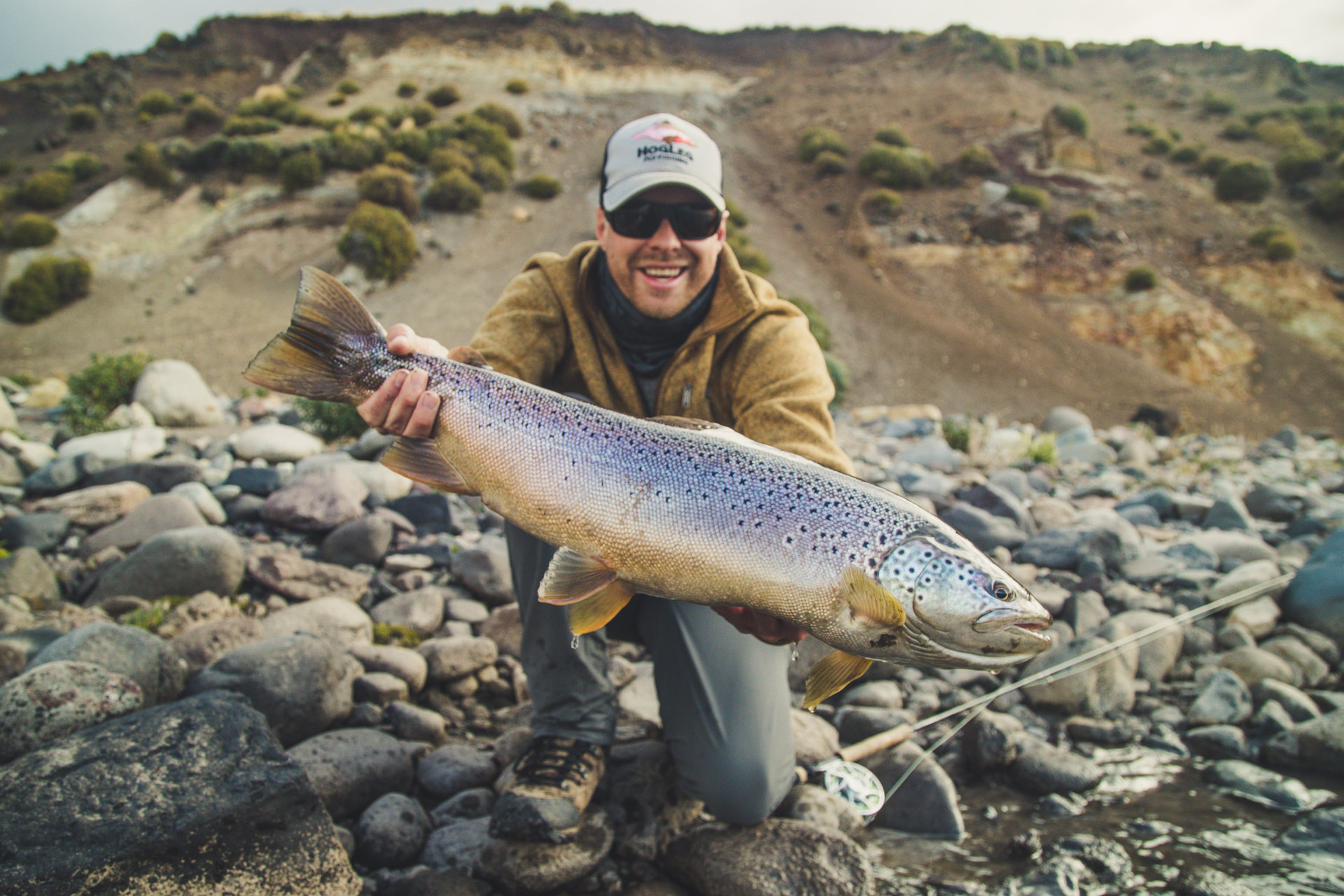 |
| Lee Lashway tight to a steelhead on a clear November morning. Todd Hirano photo |
I suppose I have gone through evolutionary phases myself - from catching tilapia on a cane pole, bobber and worms as a child in Hawaii, to catching various gamefish on conventional gear, to learning to fly fish for trout and bass, to entering the strange and unlikely reality of chasing steelhead with dry flies. I have thought that I reached the end of my evolving journey when I began achieving continued success with surface steelheading, but I am realizing that I am continuing to grow and learn in this journey.
For instance, I have been having a love/hate relationship with social media in recent times. I was initially hesitant to engage in Facebook to begin with because I saw so much self absorption, arguing, and trivial crud being posted every day. I mean who really cares about what I am about to eat, where I am , who I am with and how many ways people can argue about politics? Some folks seem to worry that the world will forget what they look like so they post selfies every day.
Well, after my Facebook account sat mostly dormant from time I opened it in 2010, I finally decided to begin participating in the world of social media in 2014, which is also when I realized that most of my fishing friends were on Facebook as well. Facebook seemed like a good way to stay connected with my fishing friends. I also opened an Instagram account shortly thereafter as well, also for the same reason. It was also during this time that I began noticing that the actvity on internet fly fishing forums like Speypages had really died down. This probably due to many people also moving to social media as their preferred platform for fly fishing interactions as well.
Of course, I began posting about my fishing activities and it seemed like a fun extension of my passion. Before I knew it, I was finding myself caught up in the trivialities of it as well. I was posting about everything from fish I caught, to who I was with, where I was, flies I was tying and yes, sometimes even what I was eating. The only thing I didn't get into was posting selfies every day.
During the summer of 2018, I began experiencing some of the best dry fly steelhead fishing I have ever had. It occurred to me that I would be shooting myself in the foot if I continually posted current pictures and stories of the surface steelhead I was getting. I was experiencing solitude due to low returns and fishing was decent, I believe largely due to the lack of pressure.
I went into incognito mode and mostly just texted my close friends to keep them in the loop of my fishing activities. I stopped posting up to date pictures of steelhead I was catching. Another reason that I stopped posting current fishing pictures is that such posts beg questions around where and when -questions I don't always want to answer to the world, for purely selfish reasons! I also could not blame folks for asking these questions - who doesn't want the inside scoop on where steelhead are being currently being caught?
It was through this abstinence of posting every fish caught and continually updating the world of my activities, that I realized how far gone I was. How had I gotten sucked into the meaninglessness of social media? It actually happened easily: we all can be vulnerable to wanting approval and recognition, it's just our human nature.
In recent times, I have been back to posting less and less on social media. When I am scrolling through my social media accounts, I find myself seeking posts with meaning and substance, but they can be hard to find. Even pictures of steelhead can become ordinary, especially if there is no story or relevance behind them. Another social media hazard: Everyone's posts of the awesome fishing they are having can lead to comparisons of what my life is lacking and that can lead to depression!
I started questioning my own motives with using social media. Why did I need to keep the world updated on what I was doing, where I was fishing and reporting on every steelhead caught in real time? Don't get me wrong, there are benefits of social media: it is a great way to stay in touch with family and friends, there are some great inspirational stories, quotes, and images that appear, and I love some of the funny stuff that is posted. However, I can find myself overly absorbed in my social media accounts and tuning out life, not really being present with those who are important to me.
I realized that telling the world about everything I was doing on social media in real time was no longer a priority. What I did discover is that encouraging others in their journeys in dry fly and dry line steelheading is what I find most valuable and meaningful. I am always honored when folks have reached out to me to learn more about my chosen methods. I am humbled when things I have written and spoke about in this blog and elsewhere has given inspiration to others. Thus, I realized that my online presence is best served right here on my humble little blog. I will still post on social media from time to time, but not so much in the realm of real time reportage.
Another change I have noticed in myself over the past few years is my current criteria of a successful surface steelhead encounter. As a younger angler who chased steelhead with dry flies, I had a narrower perspective of what I considered success in my chosen game. If a steelhead was raised, hooked, but NOT landed, and with no photograpic proof, it didn't "count". Thus, I would be terribly disappointed whenever steelhead escaped my hook, especially after a good fight with the steelhead close to shore.
Now, almost 30 years into my dry steelhead fly journey, the loss of a steelhead during the fight stings less and less. It's always great to behold the beauty of a steelhead up close and to be able to capture that beauty in photographs. However, I am now more grateful for every steelhead rise I am blessed to experience. The excitement of the rise is the ultimate reward for my perseverance and confirmation of my intuition, ability to read water and to present my surface fly in way that appeals to a steelhead.
When I think about it, hooking and landing steelhead are the parts of the experience that I have little to no control over. When a steelhead takes a fly, there is no way to predict how the hook will be oriented in the steelhead's mouth or jaw. The only part of this process I do have control over is resisting the urge to immediately raise the rod to set the hook. It is also critical to fight steelhead aggressively and quickly, keeping maximum pressure during the fight.
Otherwise if I am lucky, my hook will find purchase in the corner of the jaw or in some other location in the steelhead's mouth where a solid hookup is ensured. If I am not so lucky, my hook only catches a patch of skin and pulls free after a brief or sometimes extended fight. Ie., actually landing a surface steelhead is more of a crapshoot and less dependent on actual skill. Will I get to the point of fishing for rises only and cutting the points off my hooks as Lee Spencer does on the North Umpqua? While I agree that we should minimize our impact when pursuing our precious wild steelhead, my selfish nature still loves the adrenaline rush of the power that steelhead display during the fight.
Since eliciting steelhead rises really is the feedback I seek as a dry fly steelheader, I am joyful whenever my efforts result in those thrills regardless of the ultimate outcome. I like to think that the accomplishment of raising steelhead to the surface is what requires much more than dumb luck - although dumb luck can help, but should never be depended on. In the end, I am more than happy in getting an aggressive attack to my surface bug, maybe a few pulls off my reel and a jump - that's what counts anymore. No need for a steelhead in hand and a picture every time, much less an immediate post on social media - maybe a quick text or message to my close friends to celebrate and I call it good.
 |
| Surface steelhead that came to my Black/Blue wang in mid November |


















